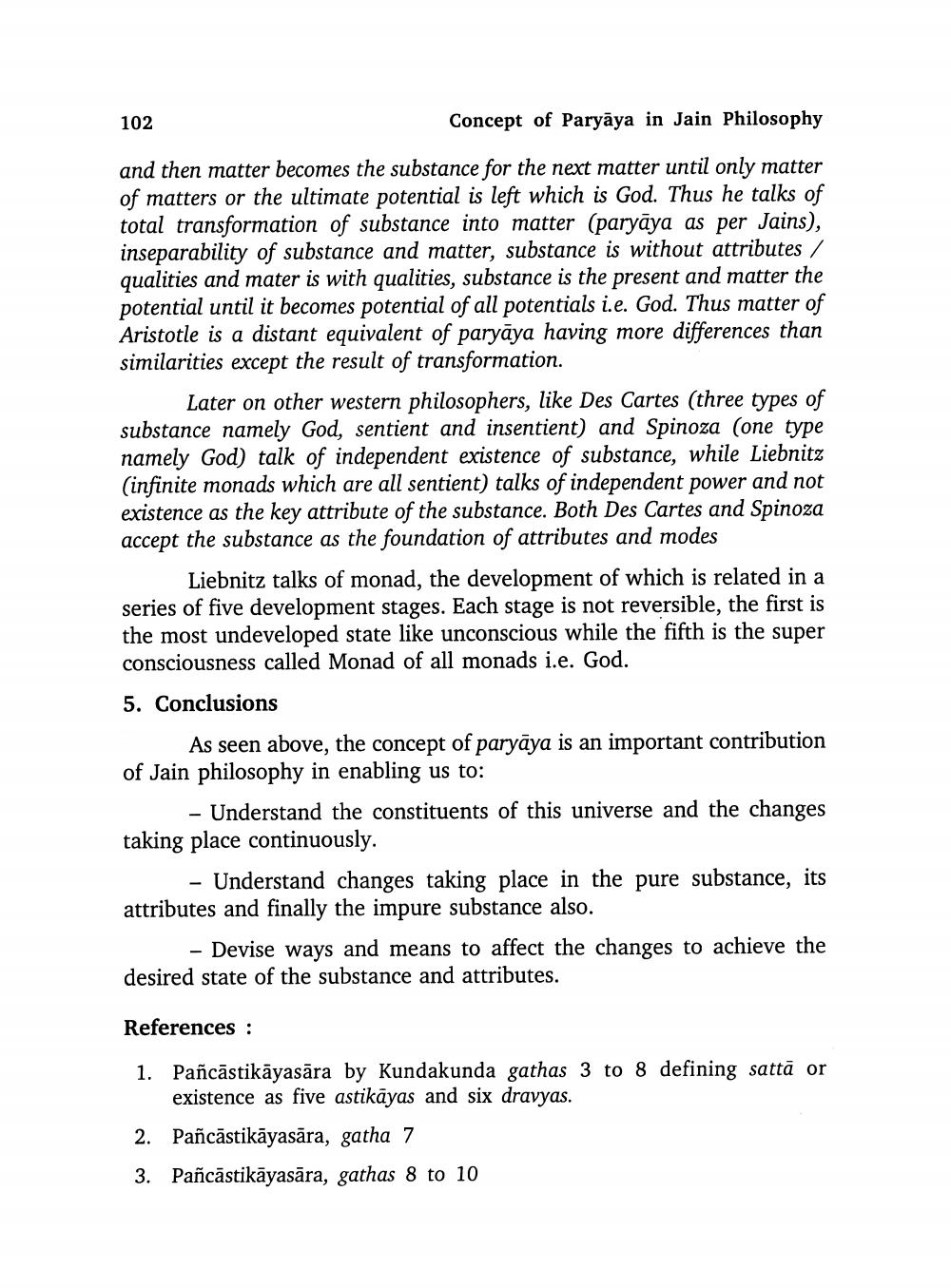________________ 102 Concept of Paryaya in Jain Philosophy and then matter becomes the substance for the next matter until only matter of matters or the ultimate potential is left which is God. Thus he talks of total transformation of substance into matter (paryaya as per Jains), inseparability of substance and matter, substance is without attributes / qualities and mater is with qualities, substance is the present and matter the potential until it becomes potential of all potentials i.e. God. Thus matter of Aristotle is a distant equivalent of paryaya having more differences than similarities except the result of transformation. Later on other western philosophers, like Des Cartes (three types of substance namely God, sentient and insentient) and Spinoza (one type namely God) talk of independent existence of substance, while Liebnitz (infinite monads which are all sentient) talks of independent power and not existence as the key attribute of the substance. Both Des Cartes and Spinoza accept the substance as the foundation of attributes and modes Liebnitz talks of monad, the development of which is related in a series of five development stages. Each stage is not reversible, the first is the most undeveloped state like unconscious while the fifth is the super consciousness called Monad of all monads i.e. God. 5. Conclusions As seen above, the concept of paryaya is an important contribution of Jain philosophy in enabling us to: - Understand the constituents of this universe and the changes taking place continuously. - Understand changes taking place in the pure substance, its attributes and finally the impure substance also. - Devise ways and means to affect the changes to achieve the desired state of the substance and attributes. References : 1. Pancastikayasara by Kundakunda gathas 3 to 8 defining satta or existence as five astikayas and six dravyas. 2. Pancastikayasara, gatha 7 3. Pancastikayasara, gathas 8 to 10




